In This Article:
With a legacy spanning over 70 years, Marantz stands as a revered name in audio, known for its innovative design and high-end performance. Despite several ownership changes—from merging with Denon in 2002, to becoming part of DEI Holdings, then Sound United, and most recently being acquired by audio powerhouse Harman (under Samsung) in 2025—Marantz has consistently upheld its reputation for quality. Today, Marantz remains a favorite among audiophiles and home theater enthusiasts alike, offering a diverse lineup of AV receivers that cater to a wide range of needs and budgets. But with six distinct models on the market, each boasting unique features and design touches, the question remains: which Marantz AVR is the right one for you?

Marantz AVR Lineup: Six Models Spanning Flagship to Entry-Level
Marantz’s AV Receiver lineup is one of its most popular and diverse product ranges, currently featuring six distinct models designed to meet a variety of home theater needs and budgets:
- Cinema 30: The flagship powerhouse, priced at $4,800
- Cinema 40: Premium performance at $3,800
- Cinema 50: Mid-tier with great features, $2,800
- Cinema 60: Affordable yet capable, $1,800
- Cinema 70s: Entry-level but feature-packed, $1,300
- NR1510: Compact and budget-friendly at $600
Pricing Update: On June 9, 2025 Marantz announced 7-12% price across the Cinema line, which have been updated above and throughout the article below.
Pro Tip: Unlike most brands, Marantz uses lower model numbers to indicate higher placement in the lineup — which is why the Cinema 30 is their flagship, while the Cinema 70s sits lower in the range. The only outlier is the NR1510, a compact entry-level model carried over from a previous product line.
What Is an AVR? Understanding the Key Functions of Marantz AV Receivers
An AVR (Audio/Video Receiver) combines two essential functions into a single unit: Preamp/Processing and Amplification—making it the heart of any home theater system. Just add speakers, source components and a display devices like a TV or projector. AVRs also typically include a built-in source, namely a radio tuner (usually AM/FM, but sometimes just FM). This is normally what differentiates a receiver from an integrated amplifier.
AVR Preamp Functions: Your Home Theater’s Control Center
The preamp stage acts as the central hub where all your audio and video sources connect. Whether it’s a Blu-ray player, game console, streaming device, media player or cable box, you plug everything into the AVR, which lets you easily switch between inputs using the receiver’s remote or a universal remote control. The built-in preamplifier adjusts the voltage level of each source’s audio using volume controls, and passes this audio signal to the built-in amplifier and the video section out to a display device.
Many Marantz receivers include a separate preamp module just for turntables so you can hook up that vintage (or brand new) turntable and spin that vinyl without needing a separate outboard phono preamp.
In addition to physical connections, every Marantz AVR includes built-in WiFi and Bluetooth connectivity for wireless streaming, plus traditional AM/FM radio reception via a built-in tuner.
Also, most Marantz AVRs offer multi-channel preamp outputs which allow you to use more powerful outboard power amplifiers, expand the channel count to use more speakers or send audio signals to different rooms within your home.
AVR Processing Functions: Turning One and Zeroes into Analog Sound
Marantz AVRs handle all the necessary audio decoding and digital-to-analog conversion, ensuring crisp, clear sound regardless of which source device is selected. All of the current Marantz AVRs but the NR1510 can handle both Dolby Atmos and DTS:X immersive sound, and all support common digital formats such as Dolby Digital, DTS Digital Surround, MP3, WAV and PCM. Higher end models expand support to include AURO 3D and IMAX Enhanced sound as well as Sony 360 Reality Audio.
Marantz AVRs can also upconvert (or downconvert) video signals to the native resolution of your TV or projector. But in many cases, you’re better off just passing those signals through to your TV or projector for it to do the video processing.
AVR Amplifier Functions: Powering Your Speakers
The amplifier stage of the AVR boosts the analog audio signals of all connected sources and delivers power to your speakers through the built-in amplifiers. This allows your favorite movies, music, and games to come alive with dynamic, room-filling sound.

Marantz AV Receivers: Design, Features, and What Sets Each Model Apart
Marantz has built an impressive lineup of AVRs, currently featuring six models. Which one fits your home theater needs?
First, their design stands out. Unlike the typical rectangular status displays found on most AVRs, Marantz uses a unique “porthole” display for a sleek, minimalist front panel. On the Cinema 30, 40, and 50 models, essential controls are hidden behind a flip-down door for a clean look, while the Cinema 60 exposes controls alongside its porthole display.
The Cinema 70s and NR1510 take a different approach with much slimmer, compact designs. The 70s keeps the porthole but shows control buttons on the front, whereas the NR1510 opts for a traditional rectangular display with exposed buttons — a nod to classic AVR styling.
Key Features Common Across All Marantz AVRs
Amplifier Type: All the receivers in this group incorporate Class A/B amplifiers (although it is not indicated on the NR1510).
Surround Sound Support: Most surround sound formats are supported, including Dolby Atmos and DTS:X Audio. The Cinema 30 also supports DTS:X Pro, and the 30, 40, and 50 models support Auro 3D Audio and IMAX Enhanced Audio.
HDR Support: HDR10/10+, Dolby Vision, HLG, and Dynamic HDR pass-through. However, HDR10+ is not supported on the NR1510.
HDMI 2.1: Includes HDMI-eARC and Gaming Support (4K/120Hz, 8K/60Hz, VRR (Variable Refresh Rate), ALLM (Auto Low Latency Mode), and Quick Frame Transport (QFT). The NR1510 does not provide enhanced gaming features.
Phono Input: All Marantz AVRs include a dedicated phono input compatible with MM (Moving Magnet) cartridges, allowing you to connect a traditional turntable and enjoy your vinyl collection with ease. If your turntable has a built-in phono preamp, you can simply connect it to any available analog audio input on the AVR.
Hi-Res Audio: Support for 24-bit/192kHz audio playback. Digital audio format support includes MP3, WMA, WAV, MPEG-4/AAC, FLAC, and ALAC.
M-DAX 2 Compressed Audio Enhancer: This feature enhances compressed audio formats such as MP3, Windows Media Audio, and AAC by recalculating the frequency range to deliver clearer, more detailed sound.

HEOS Wireless Streaming: With the HEOS app, Marantz AVR users can stream music from multiple services—including Qobuz—with seamless multi-room control. HEOS-enabled wireless speakers can be added alongside the speakers connected to the AVR, creating a whole-home audio experience. You can play the same song throughout every room or choose different tracks for each zone. HEOS supports up to 64 zones, making it easy to customize your home’s music listening.
Wireless Music Streaming: Amazon Music HD, Spotify Connect, Pandora, and more… Roon Tested.
Wireless Connectivity: Bluetooth, AirPlay 2, Wi-Fi (Wired Ethernet is also included if needed).
Voice Control: Alexa Built-in, Google Assistant, Siri compatible
Smartphone App Control: iOS, Android
Audyssey Room Correction Built-in (one or more of the following options): MultEQ, MultEQ XT32, Dynamic EQ, Dynamic Volume

Pro Tip: The top three models—Cinema 30, 40, and 50—support Dirac Live room correction with the purchase of a license. Dirac Live lets you precisely calibrate your speakers to the room’s acoustic environment, resulting in significantly improved accuracy. This means clearer vocals, a wider sweet spot, tighter and deeper bass without boominess, and an overall more balanced and immersive listening experience.
Update 10/1/2025: Dirac has announced the availability of Dirac Live Active Room Treatment for the Cinema 30, 40, and 50, which goes beyond Dirac Live Room Correction. Check out the details.
Onscreen Setup Assistant: Every Marantz AVR comes with a built-in Setup Assistant that simplifies the initial installation process. When you power on your AVR for the first time (with your TV on and the correct input selected), the guided setup menu will automatically appear. If you choose to exit the Setup Assistant (using the BACK button on the remote), you can reaccess it anytime via the main menu (GUI).
The Setup Assistant walks you through every essential step, including:
- Language selection
- Speaker setup and connection
- Speaker calibration using Audyssey
- Network connection setup
- ARC/eARC HDMI configuration
- Input assignment and labeling
- App download guidance for mobile control
This makes getting started with your Marantz AVR both easy and intuitive—even for first-time users.
Cinema 30

The Cinema 30 sits at the top of Marantz’s AVR lineup, offering robust performance and advanced processing for high-end home theater systems. It delivers 11 channels of amplification at 140 watts per channel (8 ohms, 2 channels driven), along with four subwoofer outputs and two additional preamp outputs—supporting up to a 13.4 channel configuration for immersive surround sound even in large home theaters and listening rooms (with the addition of an outboard 2-channel power amp).
Under the hood, the Cinema 30 is equipped with a Sharc Dual DSP and a 32-bit DAC, ensuring high-precision processing and superior audio fidelity, especially for digital sources. It supports all major immersive audio formats, including Dolby Atmos, DTS:X Pro, IMAX Enhanced, Sony 360 Reality Audio and Auro 3D, making it a future-proof choice for serious home theater enthusiasts.
The Cinema 30 also features 8K-capable HDMI connectivity, ensuring compatibility with the latest video standards and high-bandwidth sources.
Cinema 40

The Cinema 40 features 9 discrete assignable amplifier channels, each delivering 125 watts per channel (8 ohms, 2 channels driven). It includes four independent subwoofer outputs and supports flexible configurations—whether you’re powering a 7.4.2 or 5.4.4 Dolby Atmos, DTS:X, or Auro 3D setup, bi-amping your front channels, or creating a dual-zone system with independent audio playback in a second room.
For those wanting to expand beyond 9 channels, the Cinema 40 offers two additional preamp outputs, enabling up to an 11-channel system when paired with external amplification—all fully controllable via the AVR’s interface and volume controls.
It also supports IMAX Enhanced and Sony 360 Reality Audio, enhancing both cinematic and music playback experiences. Rounding out its connectivity, the Cinema 40 includes 7 HDMI inputs and 3 HDMI outputs, all 8K-capable, ensuring compatibility with modern video sources and display setups.
Cinema 50

The Cinema 50 delivers much of the same functionality as the Cinema 40, featuring a 9.4 channel configuration with 9 discrete amplifier channels rated at 110 watts per channel (8 ohms, 2 channels driven). It includes four independent subwoofer outputs for smoother low-frequency performance and two additional preamp outputs, allowing users to expand to an 11-channel system with external amplification.
The Cinema 50 supports Dolby Atmos, DTS:X, and Auro 3D, providing flexible immersive audio configurations in a wide range of room sizes. You also get IMAX Enhanced and Sony 360 Reality Audio support for added cinematic and spatial audio realism.
Connectivity includes 6 HDMI inputs and 3 HDMI outputs, all with full 8K compatibility, making the Cinema 50 a compelling choice for home theater enthusiasts looking for flagship-level performance at a lower price point.
Cinema 60

The Cinema 60 features 7 channels of amplification rated at 100 watts per channel (8 ohms, 2 channels driven) and includes 2 subwoofer outputs, making it well-suited for medium-sized home theater setups. While it scales back on some of the premium features, it still delivers excellent performance with support for Dolby Atmos and DTS:X formats in a 5.1.2-channel (or 5.2.2-channel) configuration.
Unlike its higher-end siblings, the Cinema 60 does not support Auro 3D, IMAX Enhanced, or Sony 360 Reality Audio. However, it provides a solid foundation for immersive surround sound at a more accessible price.
Connectivity includes 6 HDMI inputs and 2 HDMI outputs, with three of the inputs supporting 8K, ensuring compatibility with the latest video sources while maintaining flexibility for multi-device setups.
Cinema 70s

The Cinema 70s stands out with its space-saving slimline chassis, making it ideal for smaller spaces or minimalist setups. It features a 7.2 channel configuration with 50 watts per channel (8 ohms, 2 channels driven)—a necessary tradeoff for the compact form factor.
Despite its lower power output, the Cinema 70s offers impressive flexibility: you can run a standard 7.2 setup, a 5.1.2 or 5.2.2 Dolby Atmos or DTS:X configuration, or use it for a 5.1 setup with a separate 2-channel zone for multi-room audio.
It includes 6 HDMI inputs, with three supporting 8K/60Hz and 4K/120Hz passthrough, ensuring support for next-gen gaming and video sources. One HDMI output is provided, making the Cinema 70s a solid choice for streamlined yet immersive home theater installations.
NR1510

The NR1510 is Marantz’s most compact and affordable AVR, offering a slimline profile that’s perfect for tight spaces or smaller entertainment setups. It delivers a 5.2 channel configuration with 50 watts per channel (8 ohms, 2 channels driven) and includes dual subwoofer outputs—ideal for users seeking a straightforward surround sound system without immersive audio formats.
While it does not support Dolby Atmos or DTS:X, the NR1510 still provides a satisfying home theater experience for users who prioritize simplicity and size.
Additional features include a dedicated phono input, HEOS multi-room streaming compatibility, and 6 HDMI inputsthat support 4K UHD video with HDR10, HLG, and Dolby Vision passthrough. It’s a great fit for vinyl lovers, casual streamers, and anyone building a compact AV setup.
Marantz AVR Rear Panels






Marantz AVR Comparison Chart
Pro Tip: This chart highlights key features, but not every single spec is listed—there’s simply too much to cover in one table. For full technical details, click the model names to visit the official Marantz Specification Pages.
Cinema 30 Cinema 40 Cinema 50 Cinema 60 Cinema 70s NR1510 MSRP $4,800 $3,800 $2,800 $1,800 $1,300 $600 Release Year 2024 2022 2022 2022 2022 2019 Sound Master Tuned Yes Yes Yes Yes Yes Yes Preamp Channels 13.4 11.4 11.4 7.2 7.2 2.2 Amplified Channels 11 9 9 7 7 5 Power Output per Channel 140 125 110 100 50 50 HDMI Inputs 7 (7 x 8K) 7 (7 x 8K) 6 (6 x 8K) 6 (3 x 8K) 6 (3 x 8K) 6 (6 x 4K) HDMI Outputs (1 x eARC) 3 3 2 2 2 1 Subwoofer Outputs 4 4 4 2 2 2 Wired Zones 3 3 2 2 2 2 Dolby Atmos Yes Yes Yes Yes Yes – DTS:X Pro Yes – – – – – DTS:X Yes Yes Yes Yes Yes – IMAX Enhanced Yes Yes Yes – – – Auro 3D Yes Yes Yes – – – Sony 360RA Yes Yes Yes – – – Dirac Live Support (License Required) Yes Yes Yes – – – Audyssey Yes Yes Yes Yes Yes Yes Phono Input (MM) Yes Yes Yes Yes Yes Yes HEOS Yes Yes Yes Yes Yes Yes Spotify Connect Yes Yes Yes Yes Yes – AirPlay 2 Yes Yes Yes Yes Yes – Internet Radio (Tune-In) Yes Yes Yes Yes Yes Yes Roon Yes Yes Yes Yes Yes Yes Bluetooth Yes Yes Yes Yes Yes Yes Video 8K 8K 8K 8K 8K 4K HDR10 Yes Yes Yes Yes Yes Yes HDR10+ Yes Yes Yes Yes Yes – HLG Yes Yes Yes Yes Yes Yes Dolby Vision Yes Yes Yes Yes Yes Yes Width 17.4″ 17.3″ 17.4″ 17.4″ 17.4″ 17.3″ Depth 18.0″ 16.2″ 15.9″ 13.9″ 15.1″ 14.9″ Height 10.2 10.0″ 9.3″ 9.3″ 7″ 6.9″ Weight 42.8 lbs 33.25 lbs 29.8 lbs 22.3 lbs 19.2 lbs 18.1 lbs Finish Black,
SilverBlack,
SilverBlack,
SilverBlack, Silver Black, Silver Black 
The Bottom Line
While the AVR may no longer dominate the mainstream market—overshadowed by the convenience of soundbars and wireless speakers—it remains the gold standard for enthusiasts who want a true cinematic audio experience at home. When it comes to immersion, flexibility, and upgradeability, nothing quite matches what a well-designed AVR can deliver. While separate preamp/processors and dedicated power amplifiers can provide slightly higher performance, they typically do so with added expense and complexity.
Marantz continues to prove that a thoughtfully engineered AVR can stay relevant well beyond its release year. All of the AVRs discussed in this article were introduced in 2024 or earlier, yet remain fully competitive thanks to strong core hardware, robust software support, and consistent firmware updates. Marantz doesn’t chase yearly refresh cycles unless the technology warrants it—which is a good thing.
With the Cinema Series, Marantz offers a versatile range of AVRs that cover everything from compact, space-saving solutions to full-featured flagships ready for multi-room, 8K-capable, Dirac-tuned systems. From phono inputs for vinyl lovers to advanced HDMI capabilities and immersive audio format support like Dolby Atmos, DTS:X, and Auro 3D, Marantz AVRs blend high performance with modern convenience.
And while Marantz isn’t your only option—Denon, its sibling brand under the same corporate umbrella, offers compelling alternatives with similar feature sets in its S-Series and X-Series lines. However, Marantz leans heavily into premium aesthetics, build quality, and audio refinement.
For those seeking a truly elevated home theater experience without jumping into the ultra-high-end realm of separates, Marantz AVRs strike a powerful balance of technology, performance, and value.
Price & Availability
- Cinema 30: $4,800 at Crutchfield | Amazon
- Cinema 40: $3,800 at Crutchfield | Amazon
- Cinema 50: $2,800 at Crutchfield | Amazon
- Cinema 60: $1,800 at Crutchfield | Amazon
- Cinema 70s: $1,300 at Crutchfield | Amazon
- NR1510: $600 at Crutchfield | Amazon
Related Reading
- Best AV Receivers: Editors’ Choice
- Marantz Unveils Flagship AV 10 & AMP 10
- Marantz Launches AV 20 & AMP 20 Home Theater Separates
- Dirac Live Bass Control for Select Denon and Marantz AVRs Now Available

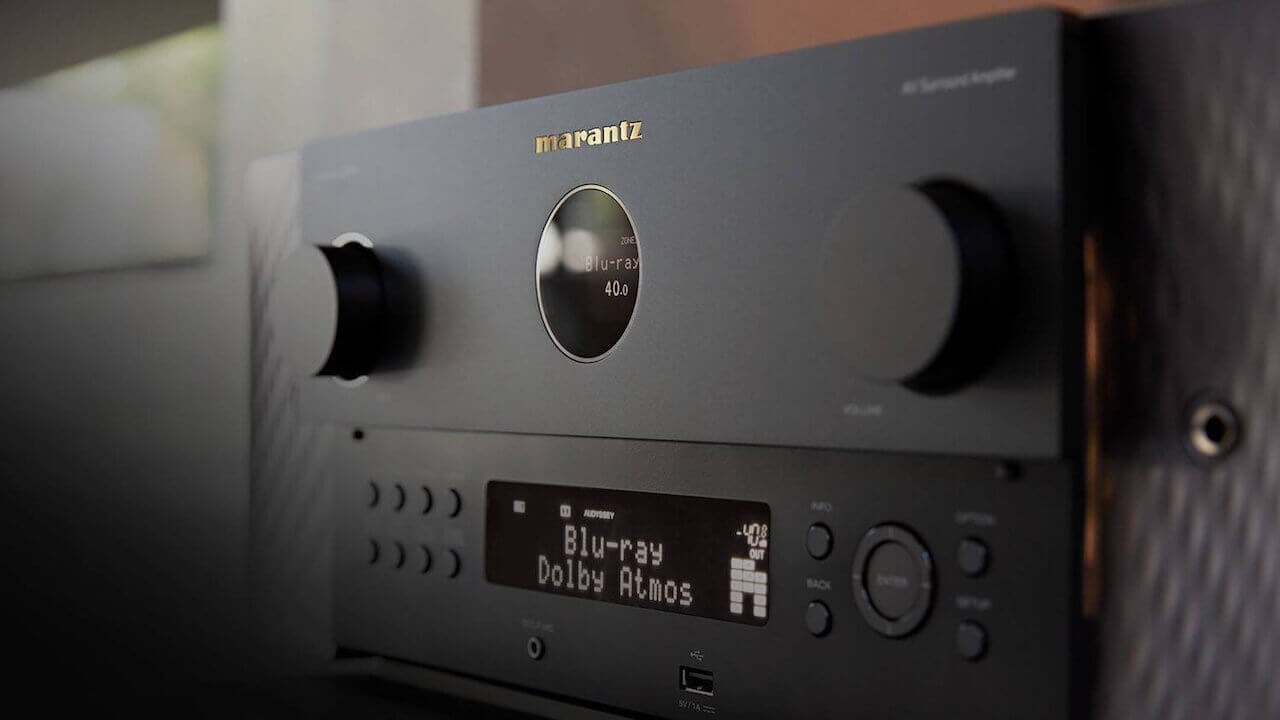
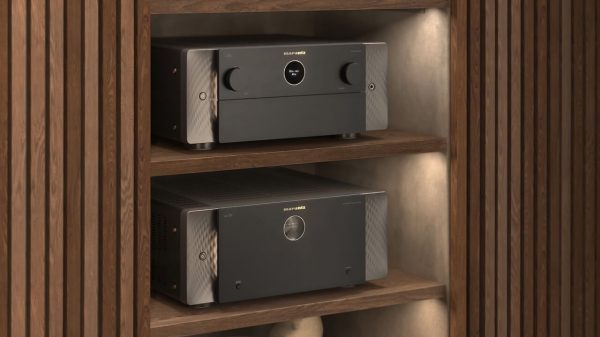

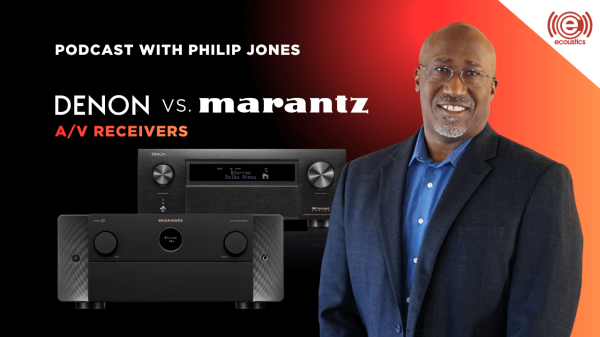

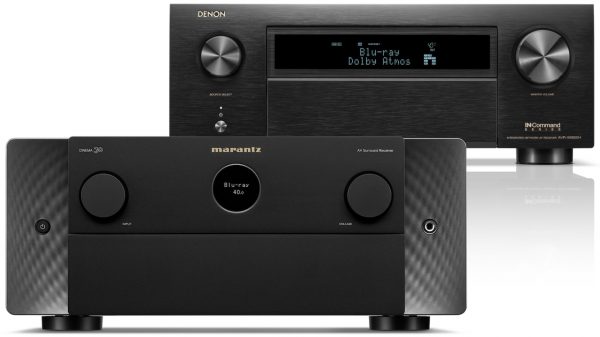
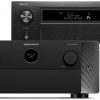
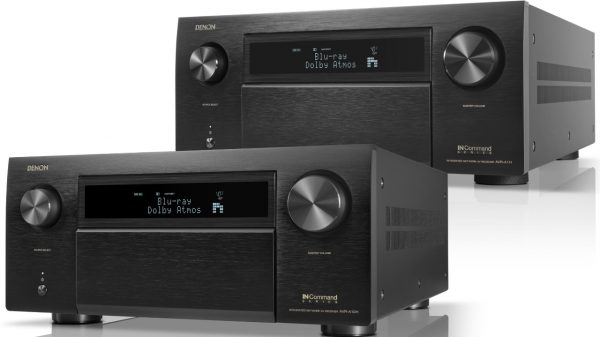

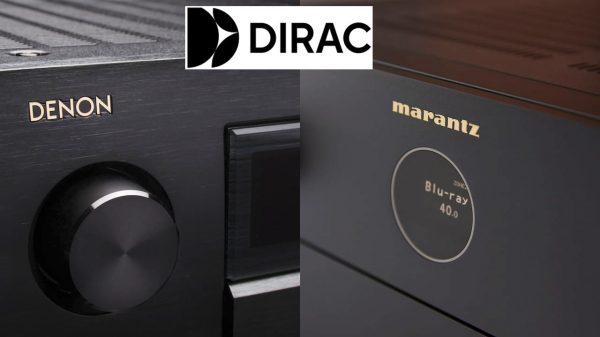
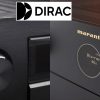














Antonio
June 4, 2025 at 8:38 pm
I wish more magazines did this. Actual comparisons of every model so that we don’t have to spend hours online trying to figure out which model makes the most sense depending on our budget.
Thank you Robert.
Ian White
June 4, 2025 at 10:43 pm
Anton,
Expect to see more articles like this where we break down the differences between models within specific brands and categories. Marantz is a legacy brand with a lot of good products but it’s hard for consumers to differentiate between models and to know what they are getting for their money.
Robert is especially good at this kind of analysis. Decades of experience actually matter.
Best,
IW
Robert Silva
June 5, 2025 at 12:04 am
You are welcome, Antonio.
ORT
June 5, 2025 at 12:51 am
Excellent article!
For me, nobody does it better than Marantz & Denon. Nobody. HEOS is easy to use and I have installed and set up more Marantz/Denon AVRs and HEOS enabled active speakers in the homes of friends and family than any other brand.
Affordability and quality are the pillars of any purchase. Marantz and Denon are without a doubt a sound foundation for any variation on the theme that is Home Entertainment.
The ORTacle at Helfi